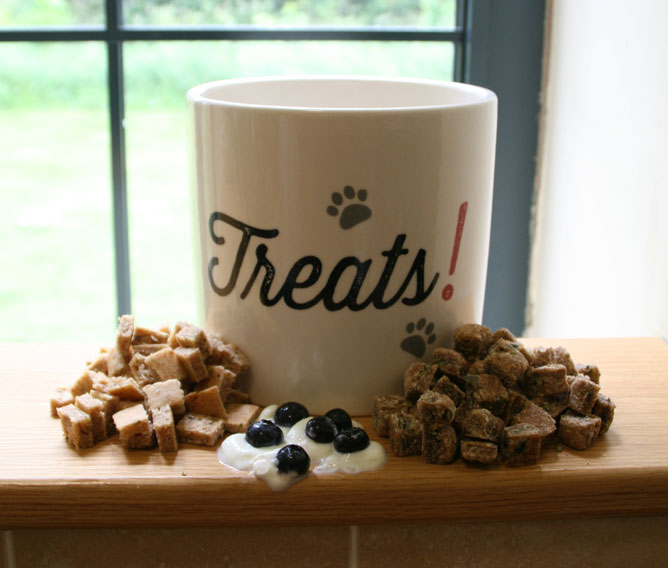Wondering how you can make homemade food suitable for your cat? A homemade diet for a cat is not as straight-forward as it would initially seem.
Making a homemade diet for a cat (or dog) is not as straight-forward as it would initially seem and caution is often urged. Most nutritionists believe that it is in an animal's best interests to eat a commercially-prepared food if at all possible.
Exceptions to this advice tends to be in managing pets with complex adverse food reactions or those with multiple medical conditions, where it's sometimes hard to find a commercial diet to suit.
Could homemade cat food cause nutrition problems?
The biggest concern with feeding a homemade diet, whether that's cooked or raw, is ensuring nutritional adequacy. This means that the complex requirement for particular nutrients in particular ratios is addressed, and that the overall diet is balanced. Getting one nutrient or level wrong can have serious knock-on effects on other nutrients. Reports of health problems from feeding nutritionally inadequate home-prepared diets are increasing. While growing kittens are more at risk, these also include adult cats.
Homemade diets have not typically undergone feeding trials (which look at how well the pet remains over a period, usually of years) or even laboratory analysis to confirm they support the lifestage that they were intended for. Cats especially have very particular needs and many recipes 'out there' are from unknown or questionable sources.
Chemical analysis of the home-prepared food is one of the best ways of knowing if a diet is suitable for a pet, and individual nutrient levels can be compared to the defined standards (for Europe these are called the NRC Nutrient Requirements of Dogs and Cats).
The best advice is that if you wish to feed a home-prepared diet, you should do so under the guidance of your vet, who will be able to access help from the nutrition services at the Royal Veterinary College or Edinburgh Vet School, which have specialist nutrition software to help design nutritionally adequate recipes.
Advice given by Dr Sue Dawson.
Make your own cat treats
Although a homemade diet may not be safe for your cat, you can still get busy in the kitchen with our collection of healthy and easy-to-follow homemade cat treat recipes.

Liver treats (left)
You will need:
- 1 pound (250ml) chicken, lamb or beef liver
- 1 cup (250ml) skimmed milk
- 2 cups (280g) flour (try 1 cup brown rice flour and 1 cup oat flour)
- 3 tablespoons olive oil
- 2 raw eggs
- 2 tablespoons dry parsley
Method
- Puree the liver and milk in a blender until smooth. Mix the flour, oil, eggs and parsley in a bowl.
- Fold the liver puree into the mixture and stir until ingredients form a smooth paste.
- Pour into a greased 9in x 13in pan and bake at 180oC (350oF) for 30-35 minutes. Treats are done when a toothpick pulls out of the treats clean.
- Keep what will be used for three to four days in the fridge, and place the remainder in several small containers and freeze until needed.
Oat cookies (right)
You will need:
- 1 1/2 cups (175g) whole wheat flour
- 1 1/2 cups (210g) wheat bread flour
- 1 cup (140g) oats, dry
- 1/2 cup (70g) pumpkin seeds
- 4 tablespoons coconut oil
- 1/2 cup (175ml) bone broth or chicken stock, no salt added
Method
- Preheat oven to 160oC (325oF).
- Mix the flours, oats, pumpkin seeds, coconut oil and broth. Spread the dough flat on a baking sheet.
- Use a butter knife to cut through every inch, making a grid of small, crunchy bites for cat mouths.
- Bake for 40 minutes, turn off heat and harden in the oven for an hour.
Yogurt drops (middle)
You will need:
- Yogurt, plain
- Blueberries
Method
- Line baking sheet with parchment paper.
- Using a spoon, plop yogurt onto the parchment paper, leaving enough room between the plops that they won't run together.
- Place a blueberry in the centre of each yogurt plop. Freeze.
These three recipes are taken from 'Dinner PAWsible' by Cathy Alinovi and Susan Thixton - a cookbook of 50 nutritious, homemade meals for cats and dogs. Published by Skyhorse Publishing, it's priced at £9.90 (paperback) or £8.39 (Kindle).
Can I still make my cat treats if he's on a specialist diet?
If your cat is on a veterinary or hypo-allergenic diet, it's easy to make treats for him, too. If you are using a wet food product, cut up some bite-sized pieces and bake in a microwave oven for 2 1/2-3 minutes, or bake in the oven at 180oC (350oF) for approximately 30 minutes, or until the desired texture is reached.
If you are feeding the dry form, grind the kibble into flour consistency using a blender. Mix with enough water to form a dough. Shape the dough into biscuits and bake them on a tray in the oven for approximately 30 minutes at 180oC (350oF), until crisp. All homemade treats need to be stored in the fridge for no longer than five to seven days to maintain their freshness and prevent spoilage. These homemade treats should not exceed five per cent of your pet's total daily intake as baking the treats does alter the nutritional characteristics of the diet.
Please note: These recipes are not intended to be used as the sole source of nutrition for your cat. You can safely provide your cat these recipes as a meal intermittently or as a treat or snack, although treats should make up no more than five per cent of your cat's overall diet.







